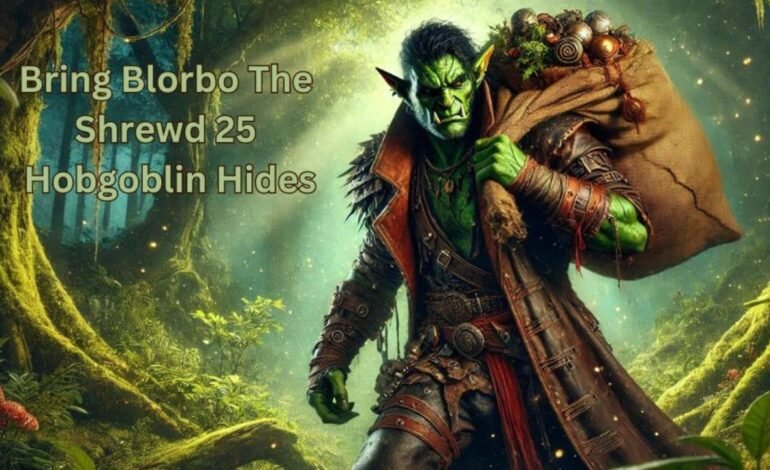
Before the Real Heroine Steps In Spoilers
Stories have an incredible power to transport us to different worlds, allowing us to witness the struggles and triumphs of various characters. Among these characters, the heroine often stands out as a beacon of strength, resilience, and determination. In many narratives, the moment before the real heroine steps in spoilers holds significant importance, shaping the plot and deepening the audience’s connection to the character. This article will delve into the various aspects of heroines in storytelling, exploring their evolution, common tropes, challenges, and the implications of spoilers on narrative engagement.
What is a Heroine?
A heroine is a central female character in a story who often embodies bravery, intelligence, and moral strength. She typically faces a series of challenges that test her character and ultimately contribute to her growth. Over the years, the definition of a heroine has evolved significantly. In traditional literature, heroines were often secondary characters, primarily serving as love interests or sidekicks to male protagonists. Their roles were limited, and their narratives rarely explored the complexities of their lives.
For instance, in classic tales like “Cinderella,” the heroine relied heavily on external forces, such as a fairy godmother, to achieve her goals. While she showed kindness and resilience, her character lacked depth and agency. However, in contemporary stories, heroines are increasingly portrayed as multifaceted individuals with their own goals and motivations. Characters like Katniss Everdeen from “The Hunger Games” and Moana from Disney’s “Moana” exemplify this shift, as they take charge of their destinies and actively shape their journeys.
This evolution reflects broader societal changes, emphasizing the importance of strong female figures in storytelling. Audiences now seek characters who inspire them and resonate with their own experiences, leading to a richer and more diverse narrative landscape.
Why Are Spoilers Important?
Spoilers play a crucial role in how audiences engage with stories. A spoiler reveals key plot points that can alter the viewer’s or reader’s experience. Some people argue that spoilers ruin the excitement and surprise of a narrative. However, they can also enhance understanding and appreciation for the story.
When audiences know what to expect, they can focus more on character development and themes rather than trying to guess the plot. For example, knowing that a character will eventually face a significant challenge or achieve a victory allows the audience to appreciate the nuances of their journey. They can engage in deeper analysis and discussions about the motivations, decisions, and growth of the characters.
Moreover, spoilers can serve as a guide for viewers who may be hesitant to invest time in a story. By revealing critical elements, spoilers can help people decide whether a particular narrative aligns with their interests. Therefore, before the real heroine steps in spoilers, it becomes clear that spoilers can be beneficial in fostering engagement and understanding.
How Do Heroine Tropes Shape Narratives?
Heroine tropes are common patterns that influence how female characters are portrayed in stories. These tropes can either limit or expand a heroine’s potential within a narrative. Some common tropes include the damsel in distress, the strong female friend, and the reluctant hero. Each of these roles contributes differently to storytelling and character development.
The damsel in distress trope is one of the most traditional portrayals of heroines. In this narrative, the heroine is often portrayed as someone who requires saving, reinforcing conventional gender roles. Characters like Snow White and Rapunzel fit into this category. They often depend on a male character to rescue them from danger or to achieve their goals. While these stories can be entertaining, they also perpetuate the idea that women need saving, which can limit their representation in media.
In contrast, the strong female friend is a character who supports the main heroine but may lack her own storyline. This trope is seen in many modern films and shows, where the heroine has a loyal friend who provides comic relief or emotional support. While these characters can be empowering, they sometimes fall into the background, preventing them from achieving their own arcs.
The reluctant hero is another popular trope. This character often faces internal struggles that resonate with audiences. She may initially resist taking on her role but eventually rises to the occasion, demonstrating courage and resilience. Katniss Everdeen exemplifies this trope as she grapples with her responsibilities in “The Hunger Games.”
Understanding these tropes allows creators to challenge stereotypes and develop more complex heroines. By subverting traditional roles, stories can provide a more authentic representation of women’s experiences. Before the real heroine steps in spoilers, recognizing the impact of these tropes is crucial for effective storytelling.
What Are Some Common Heroine Archetypes?
Heroine archetypes categorize the different types of heroines found in narratives. Identifying these archetypes helps us understand their roles within stories. Some common archetypes include the warrior, the caregiver, the rebel, and the sage.
- The Warrior: This archetype is characterized by strength and courage. She fights against adversity and stands up for what is right. Characters like Xena from “Xena: Warrior Princess” and Mulan from Disney’s “Mulan” exemplify this archetype. They often face formidable opponents and confront societal expectations, showcasing the resilience of women in the face of challenges.
- The Caregiver: The caregiver archetype embodies nurturing qualities and often takes on roles that involve caring for others. This heroine sacrifices her needs for the sake of others, like Marge Simpson from “The Simpsons.” While she is supportive, her narrative may sometimes overshadow her own aspirations, emphasizing the importance of balance in storytelling.
- The Rebel: The rebel archetype challenges societal norms and expectations. She often fights against injustice and advocates for change. Characters like Katniss Everdeen and Hermione Granger from “Harry Potter” exemplify this archetype, using their intelligence and bravery to stand up against oppressive systems.
- The Sage: This archetype possesses wisdom and knowledge. She serves as a mentor to other characters, guiding them on their journeys. Yoda from “Star Wars,” while male, represents the sage archetype and demonstrates the importance of mentorship in heroism.
Each archetype contributes to storytelling by offering different perspectives and lessons. By recognizing these archetypes, creators can craft compelling narratives that resonate with diverse audiences. Before the real heroine steps in spoilers, understanding these archetypes is essential for character development and narrative depth.
How Do Real-Life Heroines Influence Fictional Characters?
Real-life heroines significantly influence the portrayal of fictional characters, shaping their stories and characteristics. Throughout history, women have emerged as leaders, activists, and pioneers, paving the way for modern heroines in literature and film. These real-life figures serve as sources of inspiration, empowering writers to create characters that reflect their courage and resilience.
For instance, historical figures like Malala Yousafzai, who advocates for girls’ education, and Rosa Parks, known for her role in the civil rights movement, inspire writers to craft heroines who embody their bravery. Fictional characters often reflect the struggles and triumphs of real-life women, making them relatable to audiences. This connection helps to empower young readers and viewers, showing them that they, too, can be strong and courageous.
Moreover, real-life heroines challenge societal norms, providing a framework for fictional characters to follow. By breaking boundaries and advocating for change, they create a new standard for what a heroine can be. As a result, contemporary narratives increasingly feature heroines who are complex, multifaceted, and dynamic, much like the women who inspire them.
For example, the character of Wonder Woman, created by William Moulton Marston, draws inspiration from real-life figures like suffragist Margaret Sanger. Wonder Woman symbolizes empowerment and independence, representing a shift in how heroines are portrayed. This evolution emphasizes the importance of strong female figures in literature and film, reflecting a society that values diverse voices.
What Are the Challenges Faced by Heroines in Stories?
Heroines in stories often face numerous challenges that test their strength and resilience. These challenges can range from external conflicts, such as battling villains or overcoming societal expectations, to internal struggles, such as self-doubt and fear. These conflicts add depth to their characters and make their journeys more relatable.
One common challenge is the struggle for agency. Many heroines begin their journeys under the influence of male characters or societal norms. This can lead to conflicts that drive the plot, but it can also limit their growth. For example, a heroine may initially depend on a love interest for validation, only to later discover her strength and independence. This transformation is essential for character development and resonates with audiences seeking empowering narratives.
Another challenge faced by heroines is the portrayal of relationships. Heroines often encounter dilemmas between their personal aspirations and their connections with others. Balancing their goals with the needs of loved ones can create tension in their stories. For instance, a heroine might struggle to pursue her dreams while caring for family members or friends. Overcoming these challenges often leads to significant character growth, showcasing the resilience of heroines.
Before the real heroine steps in spoilers, these challenges add depth to their journeys, making their triumphs all the more meaningful. By addressing these struggles, stories can provide a more authentic portrayal of women’s experiences and highlight their capacity for growth and transformation.
What Is the Future of Heroines in Media?
The future of heroines in media appears promising as society continues to evolve. With a growing emphasis on diversity and inclusion, we are witnessing a shift in how heroines are portrayed in stories. This shift reflects the demand for more authentic and representative narratives.
As more women take on roles behind the scenes as writers, directors, and producers, the stories told will increasingly feature complex heroines. These heroines will likely reflect a variety of cultures, backgrounds, and experiences, providing richer perspectives. For instance, films like “Raya and the Last Dragon” and “Turning Red” showcase diverse heroines who navigate their unique cultural identities while facing personal challenges.
Moreover, the rise of digital media allows for more diverse storytelling. Online platforms enable independent creators to share their narratives, often featuring unconventional heroines who challenge stereotypes. This trend broadens the definition of what it means to be a heroine. By amplifying voices from underrepresented communities, the portrayal of heroines becomes more inclusive, enriching the narrative landscape.
As audiences demand authentic representation, creators are increasingly acknowledging the importance of diverse heroines. This change signifies a positive shift toward narratives that embrace complexity and authenticity. Before the real heroine steps in spoilers, it is crucial to recognize that this evolution is driven by the desire for stories that resonate with a wide range of experiences and perspectives.
Table of Pros and Cons of Heroine Portrayals
| Pros of Heroine Portrayals | Cons of Heroine Portrayals |
| Encourages empowerment and resilience | May reinforce stereotypes |
| Provides role models for young audiences | Can limit character depth in some cases |
| Reflects diverse experiences | May focus on romance over character growth |
| Challenges societal norms | Risk of tokenism in representation |
| Offers complex narratives | Can lead to predictable storylines |
Conclusion
In summary, the portrayal of heroines in storytelling plays a crucial role in shaping narratives. By understanding their significance and the impact of spoilers, we can appreciate the richness of these characters and the stories they inhabit. Before the real heroine steps in spoilers, this exploration emphasizes the evolution of heroines and the challenges they face, paving the way for a future where every heroine has the opportunity to shine.
As we continue to witness the evolution of heroines in storytelling, it is essential to recognize the powerful impact they have on audiences. Strong heroines inspire individuals of all ages, encouraging them to embrace their strength and resilience in the face of challenges. By creating diverse and authentic portrayals of heroines, storytellers contribute to a more inclusive narrative landscape that empowers individuals to pursue their dreams and stand up for what they believe in.
The future of storytelling is bright, with the potential for heroines to represent a wide range of experiences and backgrounds. As audiences become more aware of the importance of representation, we can anticipate an exciting era where heroines truly reflect the world around us.
Through this exploration of heroines, tropes, and the significance of spoilers, it becomes clear that the journey of a heroine is more than just a plot point; it is a powerful reflection of society’s values, challenges, and aspirations. Before the real heroine steps in spoilers, we recognize that every story has the potential to inspire and uplift, showcasing the extraordinary strength that lies within us all.













